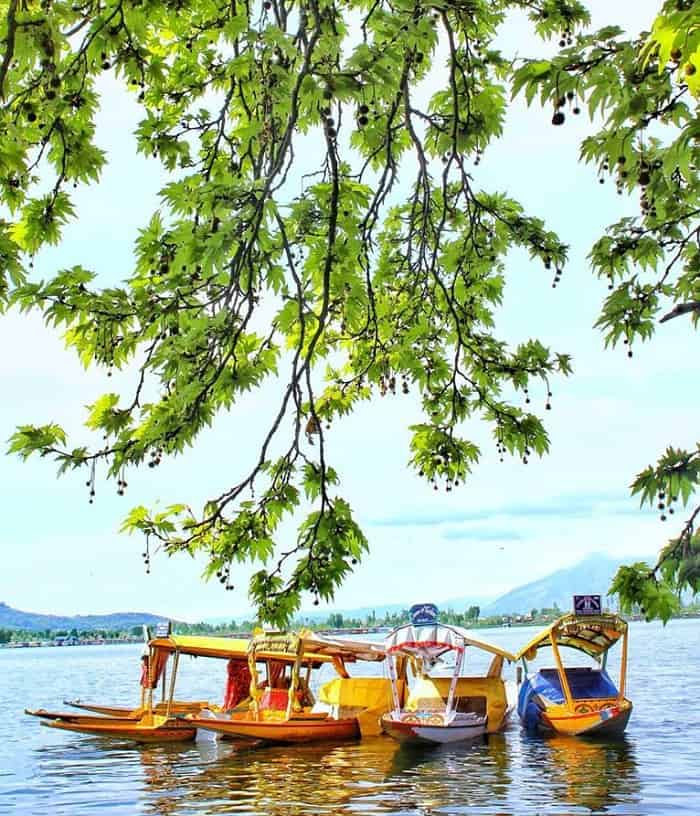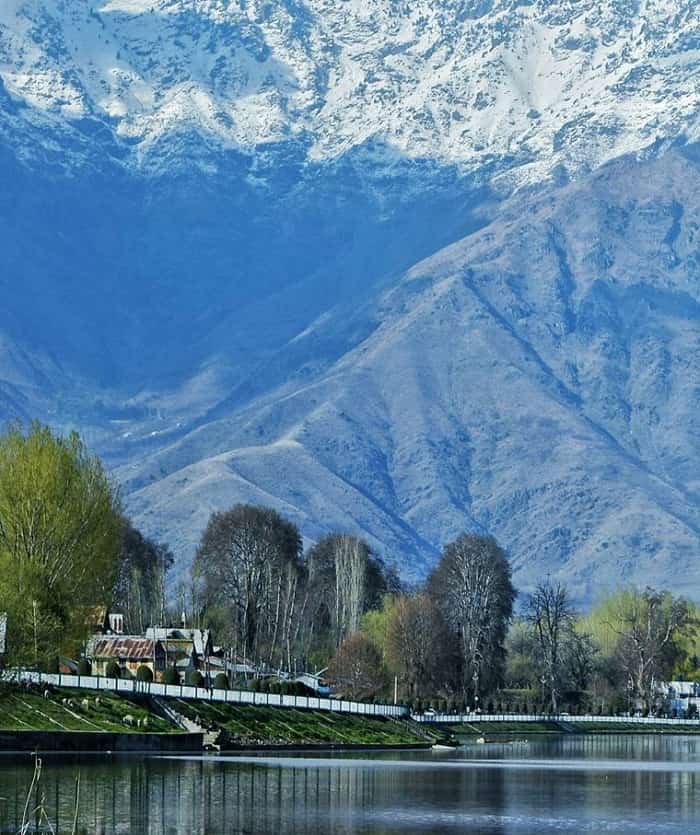Dal Lake: One more of nature’s unique creations literally being trashed by Modern Man
Even during the most trying times, Srinagar’s Dal Lake attracted and fascinated Visitors. The centerpiece of the beautiful Valley described by Mughal kings as heaven on earth, the Dal Lake, as with so many other unique creations of nature, is today an endangered place. The complacency of the authorities and lake dwellers such as houseboat owners has reduced this once 70 sq. km. area.

A journey through the lake today reveals this wonderful waterbody’s degradation into a cesspool of polythene, animal carcasses, sewage and obnoxious weeds. The much publicized shikara ride begins on a pleasant enough note at the main entry point from the boulevard around the lake with the Zabarwan Mountains in the background. But as the shikara paddles further into the lake, the harrors begin to unfold.
At Abi-Karpora, the water plants for whose removal the authorities spent lakhs of rupees have sprung back. Some distance ahead at Nowpora Bridge, the waterway has shrunk due to encroachments. The site at Jogi Lanker and Naidyar is equally depressing with carcasses and tons of polythene floating. Deep into the lake at Saida Kadal, the floating vegetable gardens and garbage have taken its toll on the lake’s health.
All the city’s drains empty their loads into the lake. People have been quick to grab every piece of land that the lake has lost due to massive weeding and silting. Old-time residents like Muzaffar Ahmed recalled once common pleasures now not possible-like swimming from Jogi Lanker deep into the lake.
All this is happening with the connivance of the Lake and Water Ways Development Authority (LWWDA) whose job is to clean up and protect the lake and its environs. “A building permission code the prohibits construction in and around the lake but that has proved no deterrent,” said Hamid Khan (name changed), a former senior LWWDA official. “The master plan for Srinagar that declares a vast area in and around the lake as a green belt, too, has proved futile.
“The sewage is responsible for the weeds flourishing despite best efforts to control their growth,” said noted ecologist khursheed kundanger, as expert on the Dal Lake. Earlier, the authorities vainly tried biological means to control the weed menace by importing a particular fish from china. Ironically, the weed infestation is heaviest near the LWWDA office.
History and heritage have been casualties. Rainwari was once the route used by the Mughals to reach the famous Nishat and Shalimar gardens. Today a huge drain there pours all the area’s waste into the lake. “We used to ferry tourists from this route as they liked to see the old houses,” reminisced boatman Ghulam Qadir. “But the encroachment and dumping of garbage has turned the channel into a gutter.”
Odds and Ends
- There is some controversy on the origin of this lake. While some geologists believe its origins lie in the Pleistocene Oligotrophic Lake that once covered the entire valley, others believe it to be just a flood plain lake.
- A Himalayan urban lake it has five basins and a number of channels well-linked with each other. Fishing is the second largest industry of the region centered on the lake.
- The glorious Mughal gardens on its shores contribute to the beauty of the Dal Lake. Though the Mughal were said to have set up 500 gardens around the lake in the 15th and the 16thcentury, only a few survive today.
- The famous Nishat Bagh (Garden of Gladness) on the lake was laid out by Asaf Khan, Nur Jahan’s brother, in 1632

The famous spring on the banks of the lake at Naidyar Ghar, known after Sufi saint Misha Sahib now is littered with garbage. “People used to come from distant places to drink water from the spring owing to its healing properties,” said Qadir.
The 1,200 houseboats and tourists staying there share the blame for the lake’s degradation. A project to provide floating septic tanks to houseboats was initiated but later discontinued. The scheme is now being revived by importing these floating septic tanks from kerala.
Ironically, the LWWDA’s attempts at creating an illusion of the lake’s good health during high profile events and visits have further damages the lake. “They close all the lake’s outlets as such times. That raises the water level giving it an artificial clean look,” said resident Abdul Reham. But that leads to the mushrooming of the Azolla (A water fern), creating a thick green moss on the surface. “It further damages the chances of keeping the lake clean,” said an activist of and NGO.
Militancy has certainly contributed to the Dal Lake’s deteriorating health. But again, that is only a part of the story. The real story here is man’s greed.
